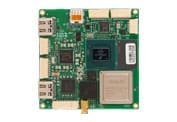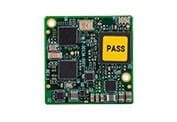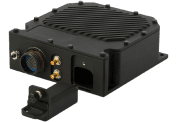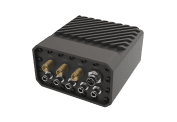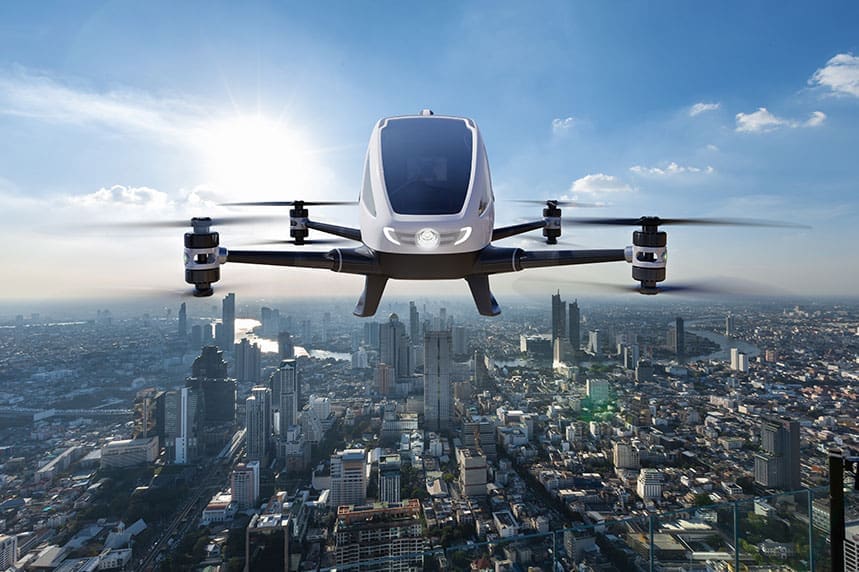What is Advanced Air Mobility?
Advanced Air Mobility (AAM) is an air transportation system that is predicted to take off by 2030. AAM will include passenger transportation and delivery of items using automated aircraft. Join Maris-Tech for an in-depth overview of Advanced Air Mobility systems.
Imagine a World with Advanced Air Mobility…
Imagine a situation where your elderly mother, who lives alone in a remote area, feels sick, but there’s no easy way for her to get to the doctor. Picture a scenario where a quick call to an air-medical service brings a healthcare professional to her doorstep within 20 minutes — with prescription drugs and even a can of soup thrown in for good measure.
Or, consider a world where your daily commute no longer includes staring at an endless line of taillights on the expressway on your way home from work. Instead, you hail an air taxi, soar over the road congestion, and land minutes later in your local “Park & Fly” lot. Sound like a work of fiction? No longer.
Imagine a situation where your elderly mother, who lives alone in a remote area, feels sick, but there’s no easy way for her to get to the doctor. Picture a scenario where a quick call to an air-medical service brings a healthcare professional to her doorstep within 20 minutes — with prescription drugs and even a can of soup thrown in for good measure.
Or, consider a world where your daily commute no longer includes staring at an endless line of taillights on the expressway on your way home from work. Instead, you hail an air taxi, soar over the road congestion, and land minutes later in your local “Park & Fly” lot. Sound like a work of fiction? No longer.
Advanced Air Mobility: The Time Has Come
The idea of flying instead of driving is coming closer and closer to reality. Electric vertical takeoff and landing aircraft (eVTOLs) can realistically transport individuals and packages around cities and suburbs quickly and efficiently, reducing the traditional reliance on conventional transportation options. Trips that take hours on the ground can be reduced to minutes in the air, improving productivity and quality of life, thanks to innovations and progress in the advanced air mobility market.
NASA’s vision for Advanced Air Mobility (AAM) Mission is to “help emerging aviation markets to safely develop an air transportation system that moves people and cargo between places previously not served or underserved by aviation – local, regional, intraregional, urban – using revolutionary new aircraft that are only just now becoming possible.” A widely cited study commissioned by NASA stated that we could see as many as 500 million drone delivery flights and nearly 750 million air taxi flights annually by 2030.

What is the Difference Between UAM and AAM?
The difference between Urban Air Mobility (UAM) and Advanced Air Mobility (AAM) lies in the fact that AAM is a general term that includes UAM (Urban Air Mobility), Regional Air Mobility (RAM), and other public and private services. Essentially, Urban Air Mobility is using smaller AAM aircrafts in urban and suburban areas.
What is the Difference Between AAM and eVTOL?
While AAM is the concept of air transportation, eVTOL aircraft is the means in which AAM will be implemented. Electric vertical takeoff and landing (eVTOL) aircraft will be used to transport people, cargo, and other items in the future Advanced Air Mobility System.
Irael launched the Israel National Drone Initiative (INDI), a government-led pilot project to establish a national network of drones capable of carrying passengers and heavy cargo. Multiple manufacturers are participating in the testing phases, with autonomous eVTOLs transporting heavy cargo loads across a managed urban airspace. The goal is to deploy a “system of aerial routes in the skies” that would allow the drones to operate in the same airspace as manned aircraft, facilitating a range of use cases, including commerce and health care, with an eye toward passenger transportation in the future.
These regulatory milestones have transformed AAM from a cool concept to a soon-to-be reality.
Why Now? Advanced Air Mobility Implementation Plan
The industry has been in the planning stages for years, and every kid who grew up watching The Jetsons always knew that flying cars were only a matter of time. But let’s take a look at the Advanced Air Mobility implementation plan to understand exactly why that time is now.
Emerging Regulations and Policies for Advanced Air Mobility AircraftFor years, AAM technology was light years ahead of regulators, making it difficult for the industry to advance. However, in March 2022, the US Federal Aviation Administration’s Advisory Rulemaking Committee (ARC) finally released its recommendations for beyond visual line of sight (BVLOS) flights, giving Advanced Air Mobility companies and others in the industry greater clarity. The recommendations establish standard risk levels, right-of-way rules, and pilot training requirements. ARC also suggested that the FAA create a process for qualifying AAM drones. Beyond the US, the European Union Aviation Safety Agency (EASA) has created a regulatory framework for small VTOL and light unmanned aircraft systems, including licensing requirements.
In 2019, Israel launched the Israel National Drone Initiative (INDI), a government-led pilot project to establish a national network of drones capable of carrying passengers and heavy cargo. Multiple manufacturers are participating in the testing phases, with autonomous eVTOLs transporting heavy cargo loads across a managed urban airspace. As drone technology is advancing, the goal is to deploy a “system of aerial routes in the skies” that would allow the drones to operate in the same airspace as manned aircraft, facilitating a range of use cases, including commerce and health care, with an eye toward passenger transportation in the future.
These regulatory milestones have transformed AAM from a cool concept to a soon-to-be reality.
Investments in AAM
AAM attracted investor attention during COVID-19, as the pandemic provided a clear use case for the necessity of these air vehicles. Since then, personal air vehicle makers Lilium and their competitor Archer Aviation each raised more than $1 billion. Joby Aviation, an electric air taxi company, raised over $2 billion. All are now trading on the stock exchange.
Further investment and increase in the Advanced Air Mobility market size is expected. Deloitte expects the AAM passenger and cargo mobility market in the United States to reach approximately $115 billion by 2035. A Morgan Stanley Research paper underscores this outlook by stating that a $1.5 trillion market for autonomous aircraft could be created by 2040.
These investments have provided manufacturers with the financial backing they need to invest in the technology necessary to get their projects off the ground (literally).
AI Video and Edge Computing for Advanced Air Mobility Aircraft
Traditionally, drones have been limited to in-flight data collection, with any data processing or analytics handled separately. Today’s manufacturers increasingly recognize that getting their eVTOLs airborne is only the first step. The 2021 DroneAnalyst Market Report highlighted that approximately 40% of businesses using drones also considered integrating them into other technology systems. They recognize that the real value is gained with a fully autonomous end-to-end AI edge solution that incorporates a high-res aerial perspective into other organizational operations. For this, drones must be equipped with sophisticated onboard low-latency video technology. The ability to capture, stream, process, and interpret high-quality video at the edge in real-time has emerged as a critical technology component in modern-day drones. It is relevant in aerial traffic management, drone navigation, takeoff, and landing, detecting adverse weather patterns, and a wide range of other use cases that further stimulate the industry.
Increasing Consumer Acceptance of AAM
A significant barrier to AAM market entry is a lack of psychological acceptance. Let’s face it, many people would think twice before putting their lives in the hands of an unmanned drone. A McKinsey survey showed a varying degree of interest in using AAMs for passenger service based on geographical location, with more than 60% of respondents citing safety as their chief concern. But that interest seems to be growing. A similar report by the EU Aviation Safety Agency highlighted that many EU citizens had a positive attitude toward these technologies and would be willing to try them to provide faster, cleaner transportation and improved connectivity. While public concern is still a challenge, industry players believe that as the benefits and safety of eVTOLs are demonstrated, consumer sentiment will further shift in a positive direction.
Advanced Air Mobility Applications
There is plenty of opportunity to demonstrate success across a wide range of use cases; let’s focus on a few:
Passenger transport: Air taxis are a commonly cited use case for passenger transport. Passengers will initially use eVTOLs to travel from one vertiport to another. Think “Park & Fly.” However, eventually, it may be possible for a passenger to call an air taxi to a specific location – home or office – and to be flown to a desired destination. This scenario allows the healthcare professional to visit the housebound ill mom and for the Jetsons’ lifestyle to become our reality.
Cargo delivery: Common use cases are package and food delivery by drones to private properties or a central delivery hub. Mom can get her prescription meds delivered, partiers can have cold beer delivered to the beach, and healthcare facilities can take delivery of human organs or blood donations.
Inspections and other operations: Autonomous visual inspection of infrastructure is already a key operations use case. Add the ability for an engineer to be flown to the site of a bridge or wind turbine or to assess the extent of fires and accidents when an expert pair of eyes is needed.
Teaming Up for the Future: Sustaining Progress in the AAM Industry
With updated regulations, technological AI at the edge improvements, and strong and growing interest from consumers, businesses, and investors, the AAM industry is well-positioned for sustained growth. To keep moving forward, more advances are needed. Strategies to safely integrate eVTOLs into larger transportation systems are essential. Logistics and design norms must be established for vertiports and heliports, and further investment should be poured into infrastructure, upkeep, and training. In addition, the gap between technological progression and regulatory standards must continue to shrink, and public acceptance needs to increase. To do this, AAM stakeholders must construct a system that not only fulfills this technology’s potential but also considers the needs and concerns of the general public. There is no doubt that AAM will be a game-changer… eventually.
To learn more about advanced air mobility and how cutting edge AI can take it to the next level, contact Maris-Tech.

